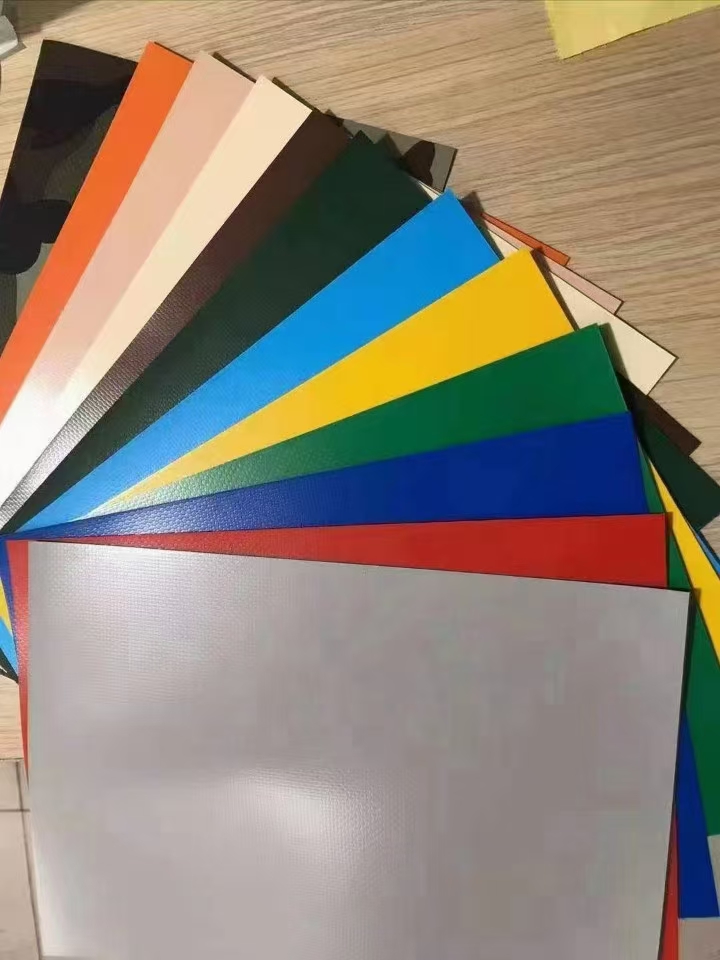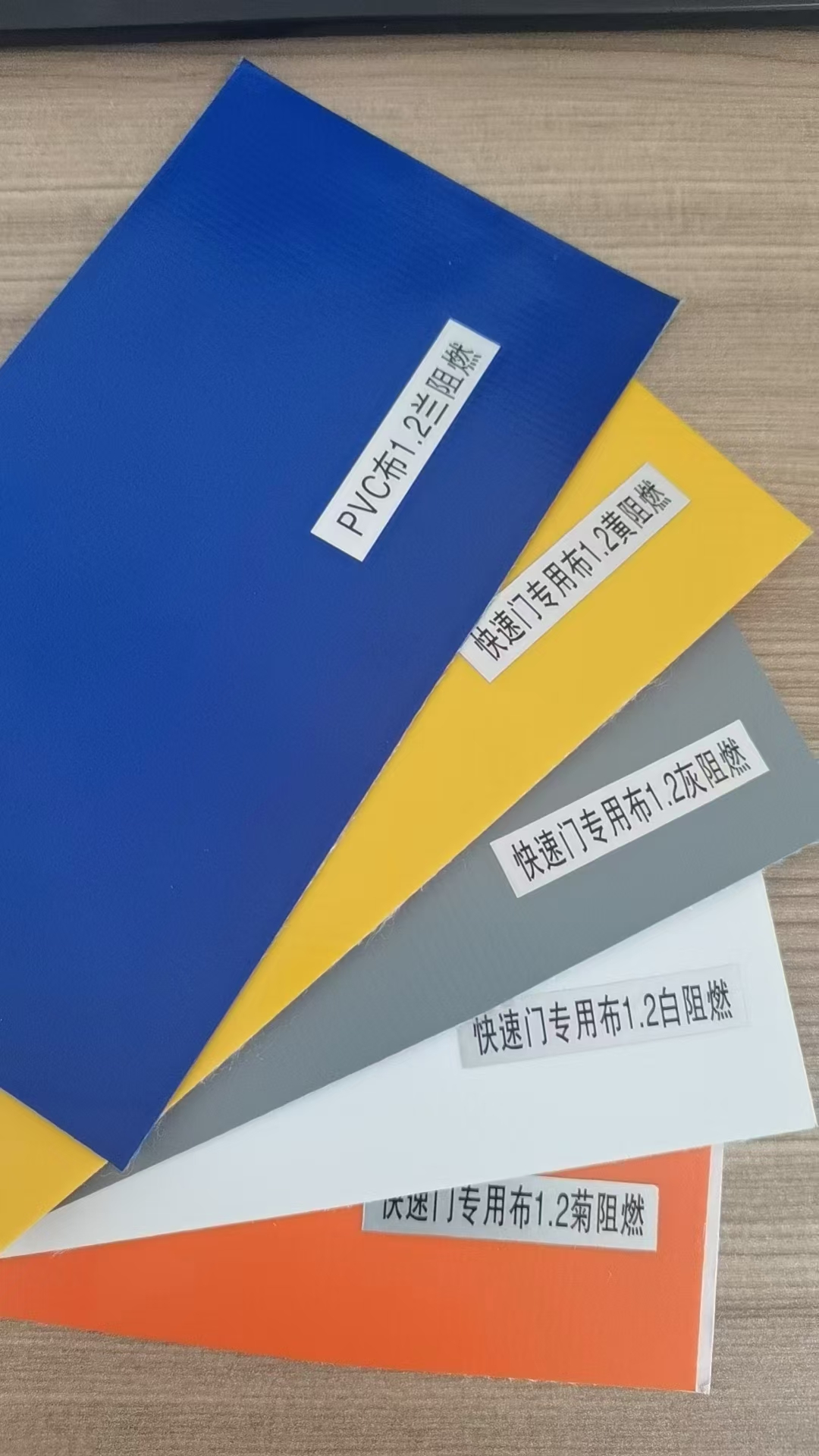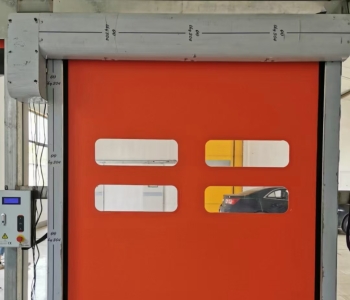The Importance of Flame Retardancy in PVC Curtains for High-Speed Doors
1. Safety Risks and Fire Prevention Requirements
Mitigating Fire Spread
Untreated PVC materials can ignite rapidly upon contact with flames, releasing dense smoke and toxic gases that endanger lives and property. In industrial settings such as warehouses, chemical plants, or electronics facilities, flame-retardant curtains delay fire propagation, providing crucial time for evacuation and emergency response.Preventing Secondary Hazards
Flame-retardant PVC curtains minimize molten drips during combustion, reducing the risk of igniting adjacent flammable materials and containing secondary fire hazards.

2. Regulatory and Industry Standards
Compliance Mandates
Many countries enforce strict flame retardancy standards for polymer materials. For example, China’s GB8624-2012 requires building materials to achieve a B1 classification (low flammability). High-speed door curtains treated with flame retardants often meet this standard, whereas non-compliant materials may be prohibited in public or high-risk environments.Industry-Specific Protocols
In flammable or explosive environments (e.g., paint spray booths, chemical processing), flame-retardant PVC curtains are often integrated with explosion-proof systems to align with fire safety and occupational health regulations.
3. Enhanced Material Performance
Multi-Functional Design
By incorporating flame retardants (e.g., chlorine-based compounds, aluminum hydroxide), PVC curtains retain their inherent resistance to chemicals, abrasion, and tearing while achieving flame-retardant ratings such as UL94 V0 (self-extinguishing within 30 seconds of flame exposure). This ensures reliability in demanding industrial settings.Environmental Adaptability
Flame-retardant curtains maintain stability across extreme temperatures (-30°C to +70°C), making them suitable for cold storage, high-heat workshops, and corrosive environments.
4. Application-Specific Value
Cross-Industry Relevance
Flame-retardant PVC high-speed doors are widely adopted in food processing, pharmaceuticals, logistics, and automotive manufacturing. Their fire-resistant properties are particularly vital in cleanrooms (e.g., semiconductor facilities) or areas with combustible dust (e.g., powder coating zones).Operational Efficiency
Flame-retardant curtains reduce downtime and asset loss caused by fires, while their insulation properties contribute to energy savings, lowering long-term operational costs.

5. Industry Trends and Innovations
Material Advancements
The shift toward eco-friendly, low-toxicity flame retardants (e.g., aluminum hydroxide, magnesium hydroxide) is replacing traditional halogenated additives, aligning with global sustainability goals.Integrated Safety Systems
Flame-retardant curtains are increasingly paired with smart technologies (e.g., infrared sensors, automated alarms) to create proactive fire prevention systems, driving innovation in industrial door solutions.
Conclusion
Flame retardancy in PVC curtains is not merely a material property but a convergence of safety regulations, operational demands, and technological progress. As industrial safety standards tighten and environmental priorities evolve, optimizing flame retardancy will remain central to advancing high-speed door systems worldwide.
Recommended Products
up to dateIndonesia Automatic Door Accessories
- Durable PVC Fast Rolling Door Fittings for Enhanced Security
- Automatic Repair of Zipper Door Plastic/Polymer Rails
- Smart Automatic Door Sensor for Fast Rolling Access Control
- Soft Fast Gate Control System 1.5kw Servo Motor and Control Box
- Automatic Access Control Square Surface Mount Infrared Non-Contact Switch
- Explosion-Proof Reinforced Self-Limiting Electric Heating Belt
- Explosion-Proof Shielded Self-Controlling Temperature Electric Heating Belt
- Heating Belt for Anti-Freezing, Heating and Heat Preservation of Cold Storage Doors
- 40W flame retardant explosion-proof self-limiting electric heating belt
- High Speed Door Zippers Industrial Door Zippers
- Safety Beam Sensor Use for Automatic Door
- Wireless Hand Sensor Switch For Automatic Door
- Hospital Door Foot Sensor
- Automatic Sliding Door System Wireless Touch Press Switch
- Automatic Sliding Door IP65 Waterprooft Wireless Hand Press Switch
- Automatic Door Microwave Sensor
- Reflective Type Infrared Detector
- Automatic High Speed Door Infrared Radar Sensor CNB-204G
- Aluminum Alloy Wind Section For PVC rapid roller shutter door
- Aluminum Bottom Section For PVC high speed rolling shutter door







